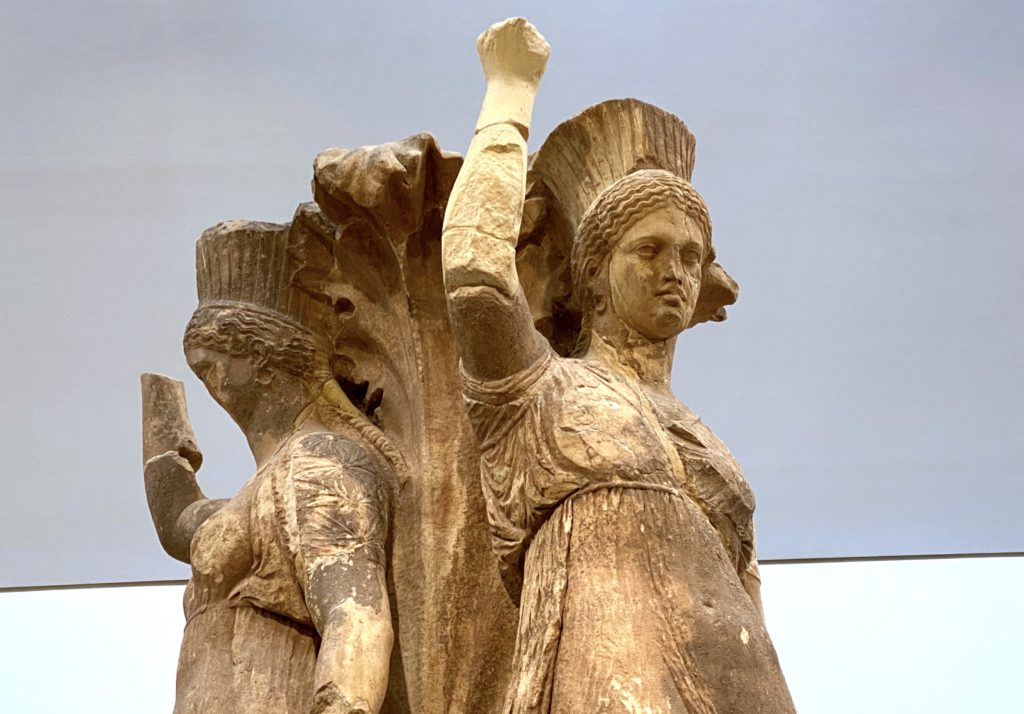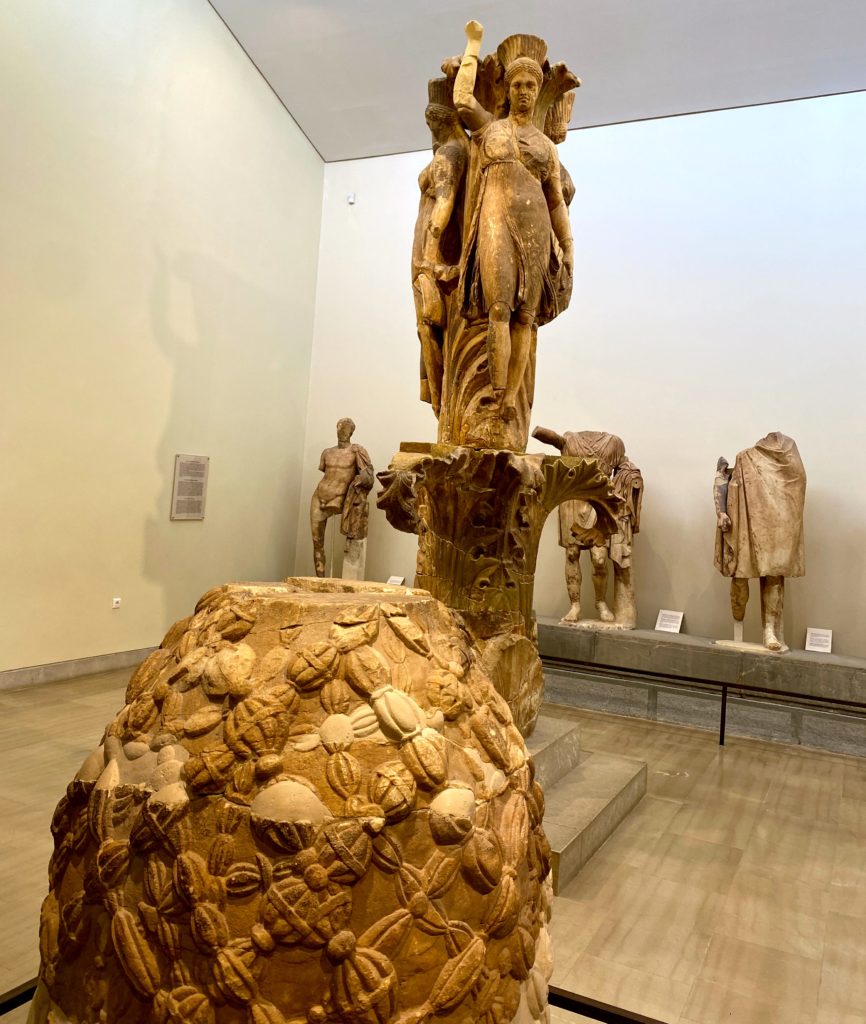Dancers of Delphi / Delphi Archaeological Museum
Temple of Apollo in Delphi was the most important and prominent Apollo temple of the ancient world, known for its famous oracles. Starting from 8th century BC. until 4th century AD. Delphic oracle was the most prestigious and authoritative oracle among the Greeks.
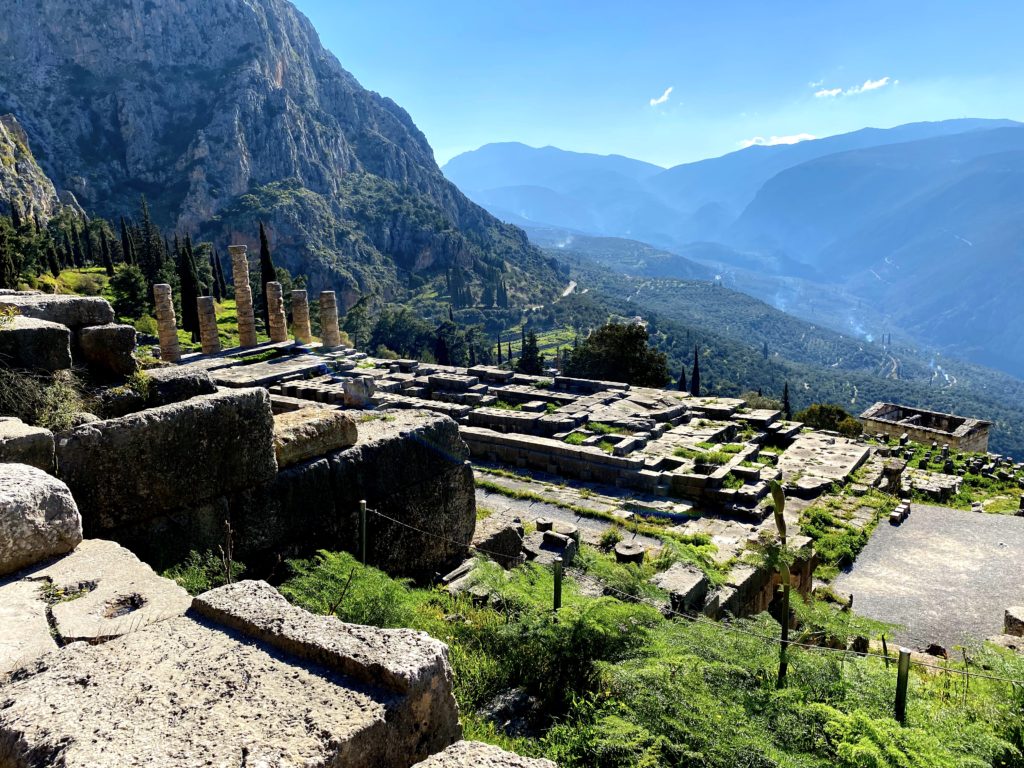
Dancers of Delphi: This spectacular multi-figure group would certainly have stood out among the numerous offerings in front of the temple.
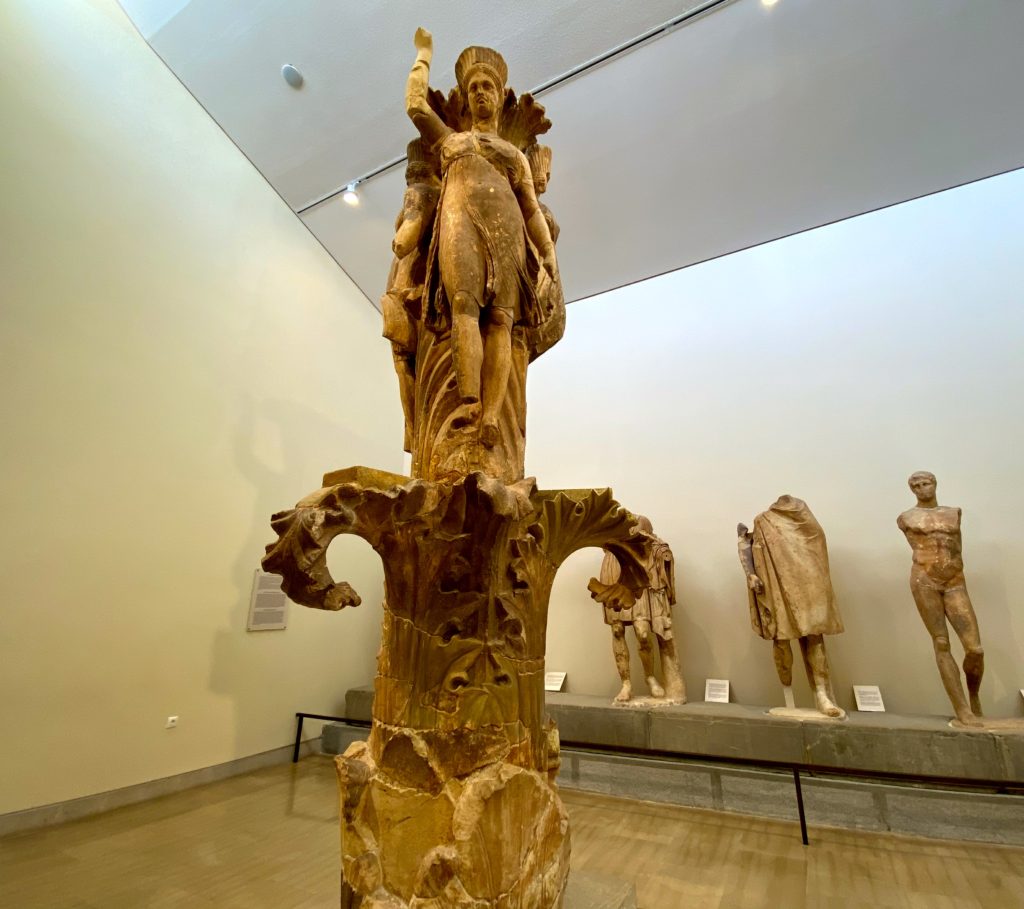
It consist of a column made of drums, which at regular intervals is encircled with acanthus leaves. On the top of column, the statues of three young women have been carved around a plant-shaped stem and give the appearance of being suspended high in the air.

They each wear a short chiton and a basket-like head-dress. In their left hands they hold the fringe of the high garment, whilst their upraised right hands originally supported the enormous cauldron of a bronze tripod, the legs of which framed the dancers.
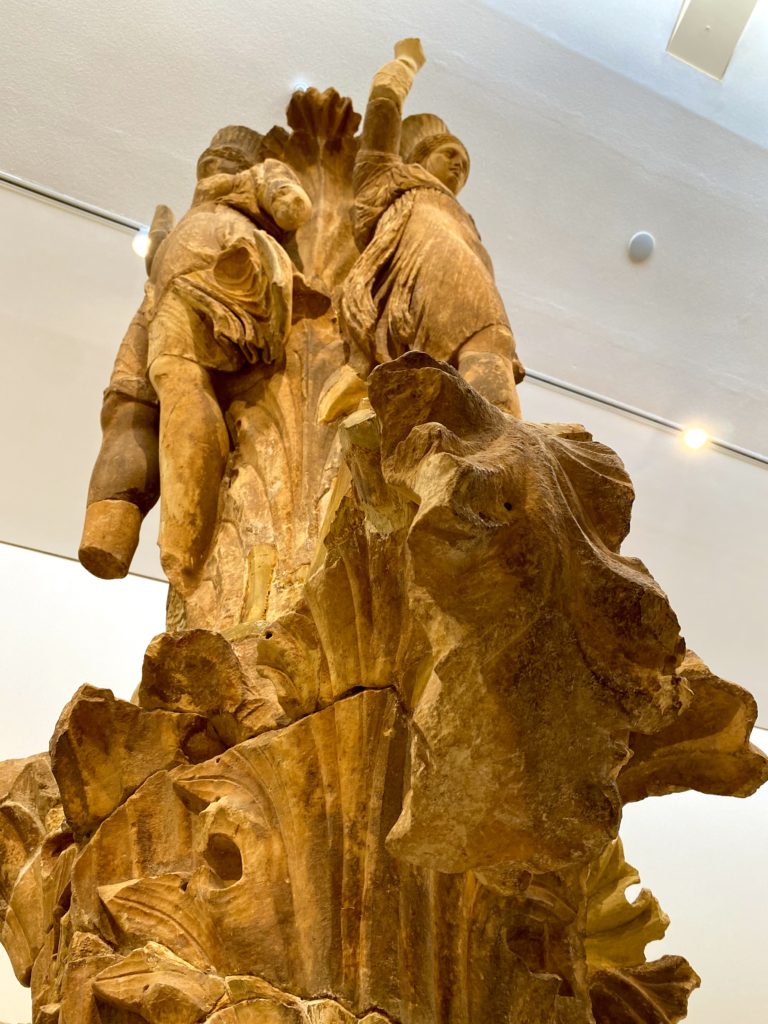
The column was named “dancers” because of the dancing impression created by the stance of the women, who have been interpreted as Thyiads, the local name for Maenads (women in the Dionysos’ entourage who danced on Mt. Parnassus)
It is now beleived however, that the figures represent the three daughters of Cecrops I. (legendary king of Athens) offering to Apollo his favorite symbol, the tripod.

According the inscription on its base, the sculptural group was offered by the Athenians around 330sBC. Perhaps within the framework of celebrations marking the arrival at Delphi of the procession of the Athenian pilgrims, the Pythais.
The latest theoretical restoration of the monument places at its top the omphalos* (displayed nearby) as a covering for the sacred tripop, which completes the symbolic significance of the Athenian offering.
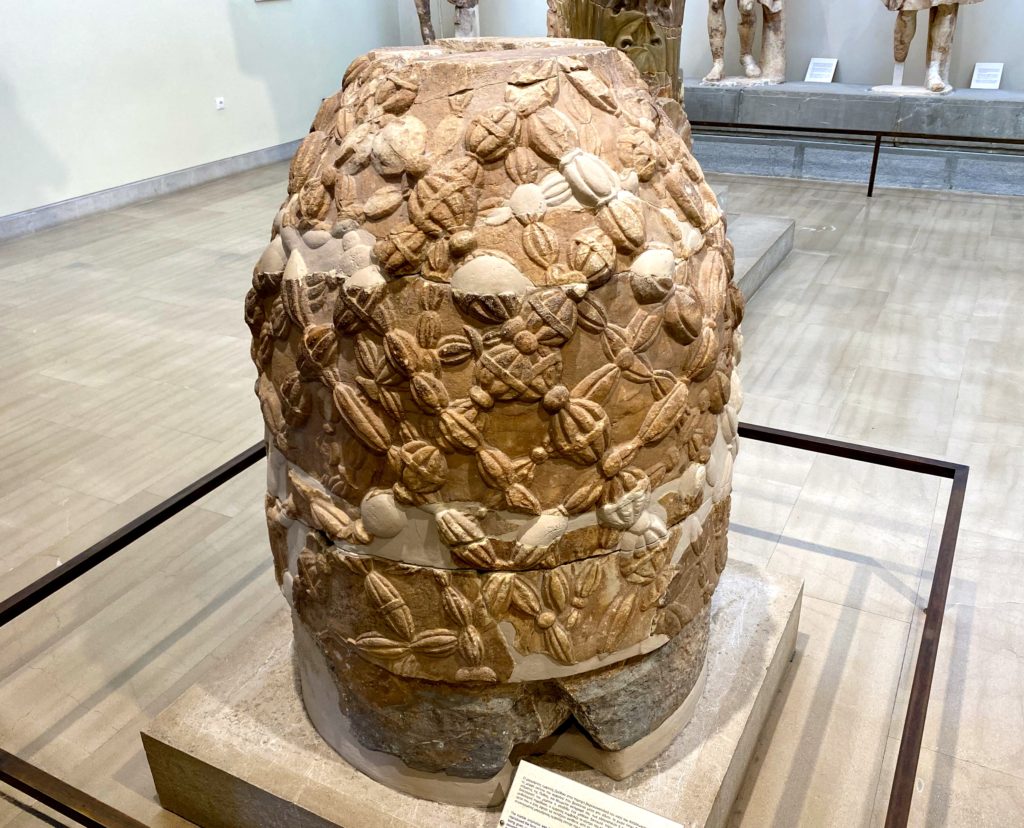
*Omphalos was found in the area to the northeast of the temple of Apollo. It most probably reproduced the form of the omphalos that used to stand in the adyton, where the prophetic responses were being given via Pythia**, and it is regarded as a Hellenistic or Roman copy that omphalos. Its relief decoration represents the woolen net, which originally wrapped the sacred object. According to a recent theory, the marble omphalos originally crowned the top of the dancers’ column.
According the mythology, the omphalos marked the centre of the earth. The point where the two eagles released by Zeus from two opposite ends of the world eventually met.
**Pythia = The High Priestess of the temple of Apollo in Delphi
The name Pythia is derived from Pytho which in myth was the original name of Delphi.
The Pythia was established in the 8th century BC. And was widely credited for her prophecies inspiredby being filled by the spirit of the god. In this case Apollo.
The Pythian priestess emerged pre-eminent by the end of 7th century BC. And would continue to be consulted until the 4th century AD.
As the temple of Apollo was the most important one, Pythias were without a doubt the most powerful women of the classical world.
